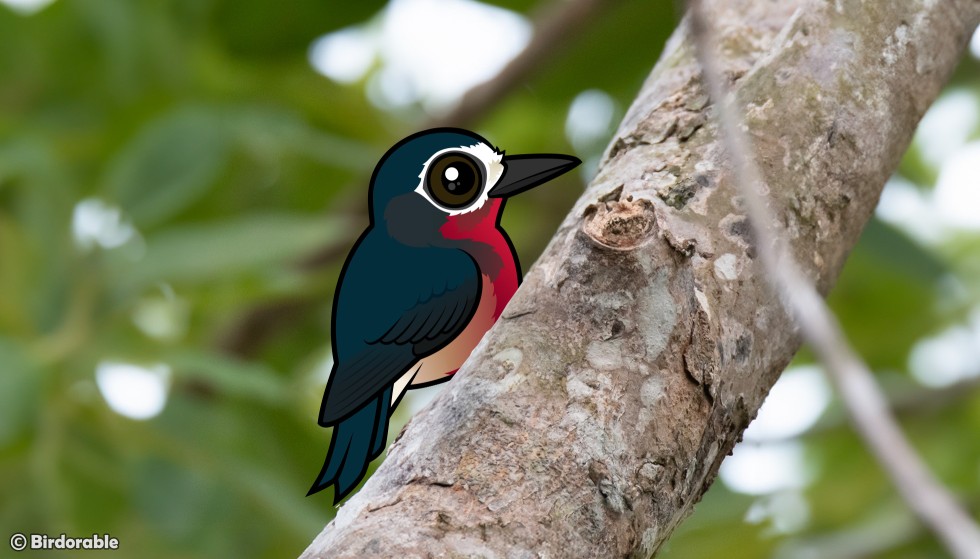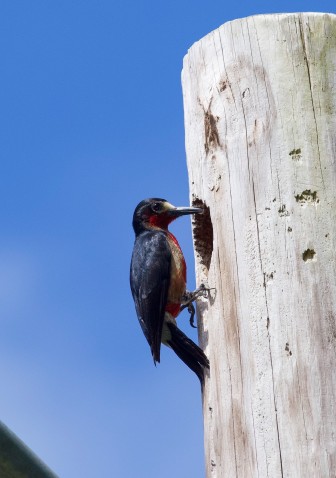Puerto Rico Week
Birdorable Welcomes the Puerto Rican Woodpecker for Puerto Rico Week

As our special Puerto Rico Week rolls on, we’re excited to introduce a new member of our Birdorable family: the Puerto Rican Woodpecker!
This striking bird is another of Puerto Rico’s 18 endemic bird species. With its glossy steel-blue body, deep red throat, and white facial markings, the Puerto Rican Woodpecker stands out both in appearance and behavior. It’s the only woodpecker species found year-round in Puerto Rico, and therefore plays a vital role in the island’s ecosystems.
The Puerto Rican Woodpecker can be found across much of the island, from lowland forests and mangroves to mountain woodlands and even urban parks. It’s a familiar sight for many locals and visitors, often heard before it’s seen—thanks to its sharp, rhythmic drumming on tree trunks or even utility poles.

Puerto Rican Woodpecker by Brandon Trentler [CC BY 2.0]
Like other woodpeckers, the Puerto Rican Woodpecker uses its strong bill to excavate nest cavities and search for insects hiding in bark. It also feeds on fruits, nuts, and seeds, making it an important player in seed dispersal and pest control. Interestingly, observers have noted that female Puerto Rican Woodpeckers tend to forage higher in trees than their male counterparts -- but only during breeding season. All birds tend to forage at a maximum height of 17 meters (about 56 feet).
The Puerto Rican Woodpecker is considered a symbol of Puerto Rico’s natural heritage. While it’s still relatively common and not currently endangered, it depends on healthy forest habitats to thrive. Protecting Puerto Rico’s diverse woodlands helps ensure this iconic bird continues to drum away for generations to come.
Our Birdorable Puerto Rican Woodpecker captures the charm of this unique species in a cute and colorful design. Be sure to check out our selection of gifts and apparel featuring this new Birdorable species, and stay tuned as we continue to celebrate the amazing birds of Puerto Rico all week long!





Comments
Leave a comment
Thank you!